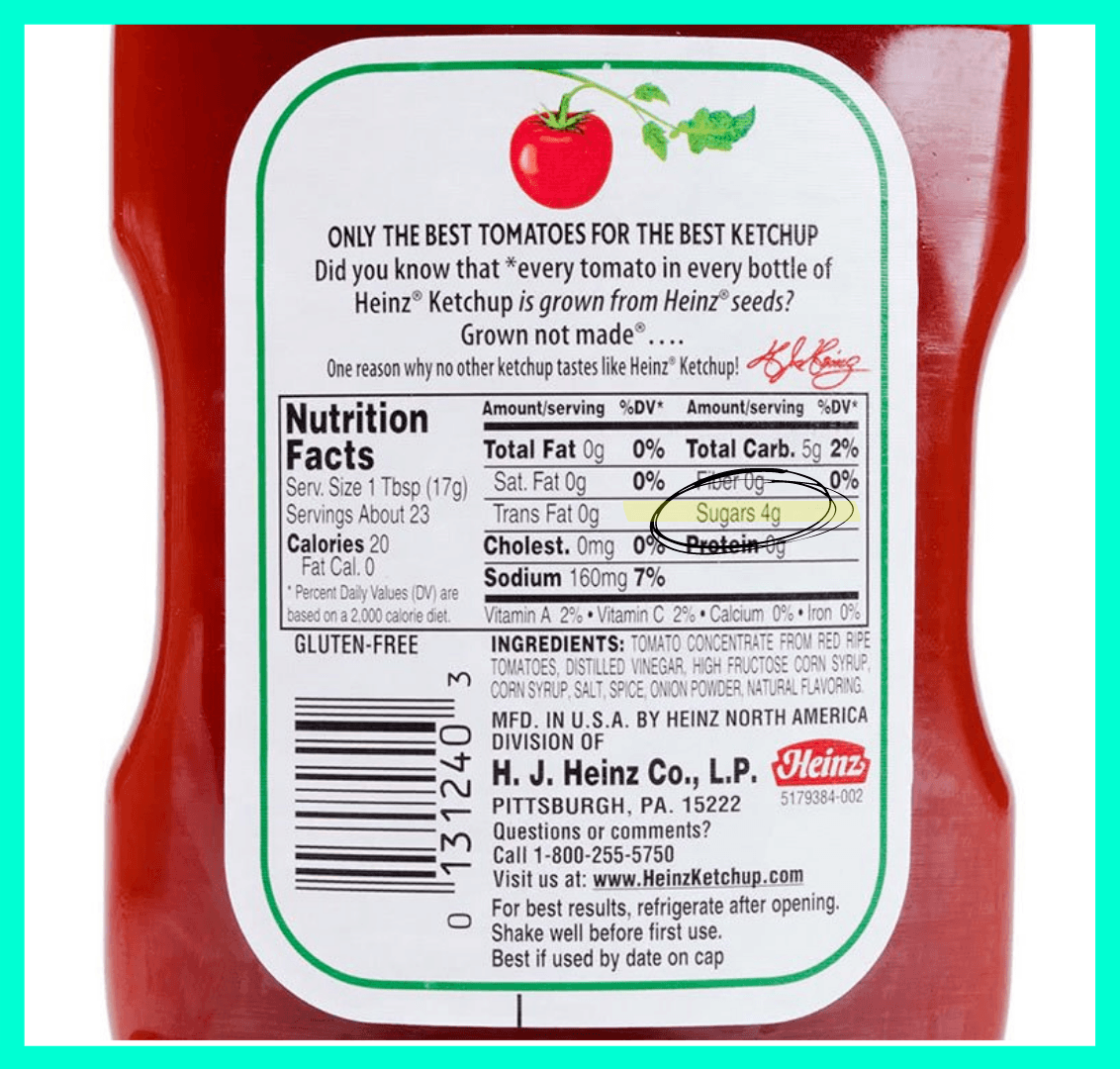I eat a small bowl of Frosted Flakes almost every night. I think it might be one of the best things I do for my health.
That’s probably not the confession you expect from a fitness pro, but learning to be in control of your diet is the ultimate goal that changes the way you see food and eliminates so much unnecessary stress. In order to have control, you need to not fear food, especially the options that lack health benefits.
Most people have one food that they fear or simply can’t control. It might be sugar, pasta, or chips (Betcha can’t eat just one!). This is something we all understand and have experienced. It’s frustrating, but there’s a way to leave the endless cycle that doesn’t require you to ditch all the stuff that tastes grrrrrreat. (Couldn’t help it.)
If you can learn to manage and control cravings — especially when it comes to sugar — it makes eating more enjoyable and dieting a thing of the past.
The Big Sugar Mistake
Don’t try and cut out all sugar immediately. This is common advice and it’s terrible; sure, reducing sugar is, generally, good advice, but going cold turkey and avoiding everything doesn’t work. If 20 years of working with clients teaches you anything, it’s that the sugar ban is a highway to dietary frustration.
Maybe you do it because you’ve been told any amount of sugar or processed carb is off limits. Or, maybe you’re aware that eating a little of something you love quickly turns into a lot, and…well…you know how that works.

Extreme restriction takes a similar road, but with more damaging outcomes. You might start out strong, but then you want dessert, or have dinner with friends, or just had a rough day at work and don’t feel like another meal of chicken and broccoli. The expectation of perfection means it’s only a matter of time before you’re mainlining ice cream and cinnamon buns into your mouth. And, that leads to guilt, frustration, and a slippery slope that can cause you to stray from your healthy habits. So, it’s not advisable unless you want to stay on the restrictive diet hamster wheel.
If you accept that there’s room for any food — sugar included — it’s empowering because you know the end goal is something you’ll enjoy. You can be perfectly healthy and fit and enjoy some of the foods you love very frequently.
The way to get to that point is controlling the endless urge to eat your favorite foods. Once you can control constant cravings, you can progress to eating small amounts and having the best of both worlds — being healthy and not having to live a life of restriction.
Why Sugar Feels Addictive
Despite what people say, sugar does not work like cocaine, but it sure can feel like it. The hardest thing about sugar is that while a little isn’t bad, it can easily trigger your desire to eat a lot more of the sweet stuff. And, that’s why experts make a big deal about sugar.
As we’ve shared before,
The real danger with sugar is not that it’s inherently fattening. A gram of sugar is still just 4 calories. And 4 calories will not make you fat. However, you can eat a lot of sugar and not feel full. So you eat some sugar…and then some more…and then some more…and next thing you know a box of cookies are gone — and you’re still feeling hungry.
And, it’s also the type of sugar you eat. Enjoying fruits and vegetables is not the problem.
There is no evidence that eating fruit, even in high amounts, will harm your health.
It’s all the added sugar that seemingly finds it way into many unnecessary foods. We still eat a ton of the sweet stuff, and often unknowingly. In fact, the average American swallows about 22 teaspoons of added sugar every day — which comes to a whopping 355 calories. (The World Health Organization recommends only about 5 percent of your calories come from added sugar, which would be 75 calories for someone who consumes 1500 calories a day.)
So, if rule #1 is to keep sugar in small amounts, then rule #2 is learn how to manage your sugar cravings.
Part of managing how much sugar is recognizing all the different ways it sneaks into your diet. If you want cookies at the end of the day, then you don’t want the sugar in ketchup to be the reason you couldn’t enjoy.

When you start applying some of the tips below, you’ll quickly feel better, not have as many cravings, and slash refined sugars. When that happens, you’ll notice a difference and be in a better position to add more freedom back into your diet.
1. Limit sugar-packed foods
Sometimes, the best thing you can do for your diet is limit all the different ways sugar creeps into the foods you eat.
Ketchup, barbecue sauce, tomato sauce, certain yogurts, ‘healthy’ cereals, soups, salad dressing, granola bars, whole grain crackers… these are all potential sugar bombs, says Georgie Fear, Registered Dietitian and author of Lean Habits For Lifelong Weight Loss. If it comes in a package, odds are there’s a good amount of sugar inside. Use sparingly or try making some of these foods at home so you can keep an eye on what goes in.
2. Add flavor to fruit
“‘Have fruit instead’ is a piece of advice that’s rather trite by now, and for many people fruit just isn’t sweet enough on its own to calm down a sweet tooth,” says Fear. Her solution: Sprinkle peaches, pears, nectarines, apples, or banana slices with cinnamon (Saigon cinnamon is the best bet for a sweet flavor) and broil them. “It’s much more dessert-worthy than a plain old orange,” says Fear.
3. Spot nutrition label red flags
Don’t sweat naturally occurring sugars found in things like milk and apples — it’s the ‘added sugars’ that trigger major health issues. “These have been tricky to spot in the past but the FDA just announced that they’ll be adding the requirement to list added sugars separately on food labels,” says Fear. Phew — your job just got easier.
And cutting sugar means you’ll have to look for it hiding under a different alias (like dextrose, glucose, fructose, fruit sugar, or ‘fruit juice concentrate’) as you’re tallying up the score.
4. Don’t go cold turkey
“Weaning down, instead of cutting sugar out cold turkey, helps your taste buds adjust so that foods with less intense sweetness still seem sweet enough,” says Fear. Eliminating all sugar at once can backfire since people crave it more and chow on larger portions when they (inevitably, womp womp) reintroduce it. If you normally add two spoons of sugar into tea, try just one for a week, and then just a squirt of honey. There’s a good chance your taste buds won’t revolt.
5. Experiment with “Natural” Sugars
Speaking of, a little bit of honey or maple syrup can add some serious sweetness to foods like Greek yogurt or oatmeal in place of the white stuff. While they don’t pack any fewer cals than regular sugar, they do contain antioxidants and noticeable flavor, so all you need to add is a tad.
6. Be smart about artificial sweeteners
They may not actually be as evil as we think, says Fear, who uses artificial sweeteners herself in moderation. “Research shows that their use is helpful in reducing sugar intake, and that when people can choose calorie-free sweetened beverages vs. plain water, they lose more weight when they can have the calorie-free beverages. Presumably, because they can better satisfy their sweet tooth and have something enjoyable.” Of course, if you can get by with natural seltzer with lemon or other fresh fruit for flavor, nix the diet sodas. But it’s not a crime to indulge every once in a while.
7. Keep a journal
Truth: Most of us are creatures of habit. Tracking down what you eat and when (i.e.: M&M’s before a 3 p.m. meeting) can help you avoid or undercut those ‘need sugar now’ triggers. A move as simple as keeping some nuts in your desk drawer for afternoon energy slumps could wind up saving you hundreds of calories in sugar.

Adam Bornstein is a New York Times bestselling author and the author of You Can’t Screw This Up. He is the founder of Born Fitness, and the co-founder of Arnold’s Pump Club (with Arnold Schwarzenegger) and Pen Name Consulting. An award-winning writer and editor, Bornstein was previously the Chief Nutrition Officer for Ladder, the Fitness and Nutrition editor for Men’s Health, Editorial Director at LIVESTRONG.com, and a columnist for SHAPE, Men’s Fitness, and Muscle & Fitness. He’s also a nutrition and fitness advisor for LeBron James, Cindy Crawford, Lindsey Vonn, and Arnold Schwarzenegger. According to The Huffington Post, Bornstein is “one of the most inspiring sources in all of health and fitness.” His work has been featured in dozens of publications, including The New York Times, Fast Company, ESPN, and GQ, and he’s appeared on Good Morning America, The Today Show, and E! News.
good article. you never go cold turkey is a big one because people think they can just cut things out and they’ll be ok. bad idea. of course it’s a possibility it can work but it might be grueling for a lot.
Thanks for reading. Going cold turkey sounds great when we’re highly motivated but as that motivation dips we soon realize how difficull it can be. Like most things, your chances of success are much higher when you take incremental steps.